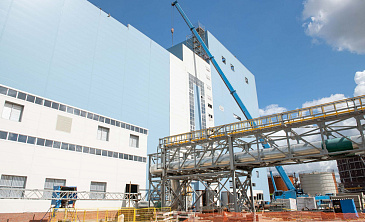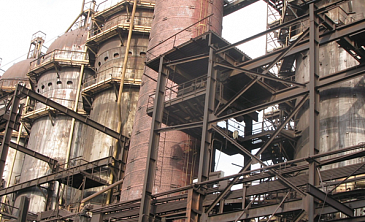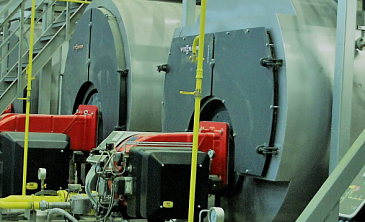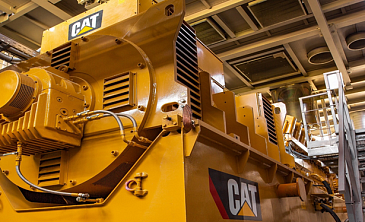- Home
- Sustainable development
- Energy efficiency
Energy efficiency
NLMK has been continuously improving its energy efficiency since 1999. Since 2004, NLMK Lipetsk has implemented more than 44 major investment projects with the total investment amount in excess of RUB 21 billion.
The specific energy intensity of steel production has been reduced ¼ times from the 2001 level.
Results
- NLMK Lipetsk has been consistently increasing the share of captive energy gereration, up to 61% as of 2024.This is achieved through optimizing repairs, monitoring and improving the reliability of shop operations as well as implementing energy-efficiency projects aimed at increasing the output of the site’s Co-Generation Plant (CGP) and Recovery Co-Generation Plant (RCGP).
- In 2024, a new high-efficiency gas-powered modular boiler was commissioned at the Parus facility of the Novolipetsk Medical Centre Association, which has replaced the fuel oil boiler.
- The Cold Rolling & Coating Shop continues construction of the new Continuous Hot-Dip Galvanizing Line No. 5
- The Group has completed its targeted lighting replacement programme. In 2024, approximately 5,000 old lighting fixtures were replaced with high-efficiency LEDs. Future replacement of lighting will be carried out under other programmes.
- Revamp of air stoves of Blast Furnace No. 4 continues. The project aims, among other things, to improve energy efficiency and reduce CO emissions. The upgrades are phased through to 2026.
- The RCGP-2 Construction investment project continues aimed at recovery of waste fuel gases. The new recovery co-generation plant includes BOF gas collection and processing equipment. New Distribution Sub-Station No. 3, rated at 220 kV, has been put into operation, to serve the RCGP power output; two gasholder tanks for BOF gas completed construction, installation of RCGP-2 auxiliary equipment is nearing completion. The plant is due to go online in 2025.
- The project to build natural gas-powered high-convection H2 batch annealing furnaces began implementation at the Cold Rolling & Coating Shop. The new furnaces will replace an older furnace type, thus increasing the energy efficiency by more than two times and ensuring the high quality of annealed rolled steel.
-The automated process control system of RCGP received an upgrade that improved the equipment reliability.
-Digital assistant services were deployed to support optimal operating parameters at the Co-Generation Plant and the Oxygen Shop..
- Energy network models are being further developed, spanning from source to consumer, in order to support energy infrastructure design and operation simulations..
-A steam supply line was built at the Coke Plant, increasing the utilization rate of secondary energy steam (spent steam)..
- The revamping of BF gas ducts has successfully passed a complicated stage of implementation that had to be synchronized with the BF repair schedule.
- In 2024, NLMK Lipetsk realised 43 energy efficiency optimisation measures.
Specific energy intensity of steel production at NLMK Lipetsk, Gcal/tonne of steel
- For the chart through to 2024, see the attached Excel file
- Starting from 2024, NLMK Lipetsk calculates its energy intensity in accordance with М 05757665-EN-265-0525-2023 "Methodology for calculation of the specific energy intensity of steel production for integrated steelmaking operations and the specific energy intensity of steel goods for main subdivisions of NLMK". The specific energy intensity values for 2020-2023 are provided in two versions.
- Annual energy intensity values are provided as is without statistical normalization.
- Since 2001, the energy intensity of operations has improved 27.3%..
In line with the Energy Management System requirements, the specific energy intensity of steelmaking is set as the key indicator of NLMK Lipetsk’s energy performance. The indicator has demonstrated a sustained downward trend throughout the current strategic cycle, improving the comprehensive energy performance of steelmaking operations (specific energy intensity of steel production relative to the baseline). The actual value of specific energy intensity of smelting decreased year-on-year by 1.5%, from 5.10 to 5.02 Gcal per tonne of steel.
In 2024, NLMK Lipetsk has reduced the share of fuel and energy in its actual operational expenses by 12.8%, driven by effective management of power procurement and lower purchases of coal.
A systematic approach to energy management at NLMK Lipetsk, as well as to the management of energy consumption by core and auxiliary steelmaking equipment, and efficient departmental interaction contributes to the site’s accomplishments in energy efficiency.
NLMK continuously enhances its toolkit aimed at driving energy efficiency goals.








